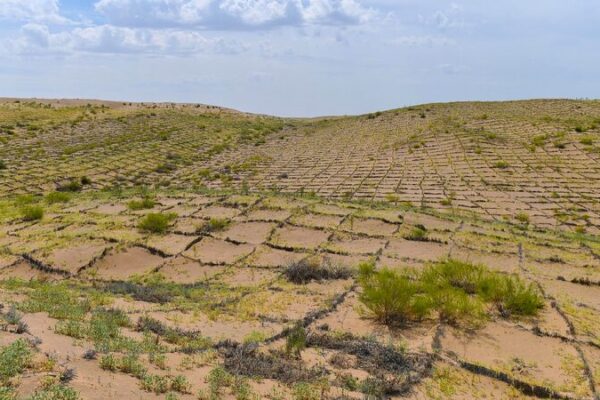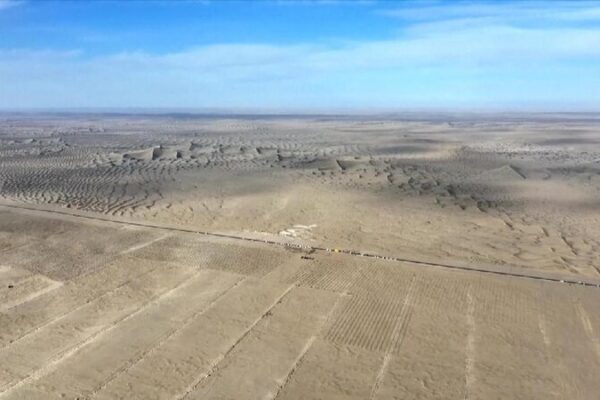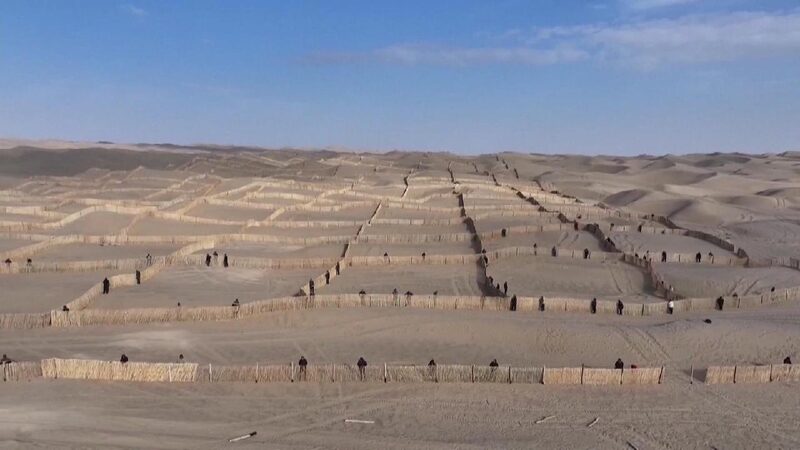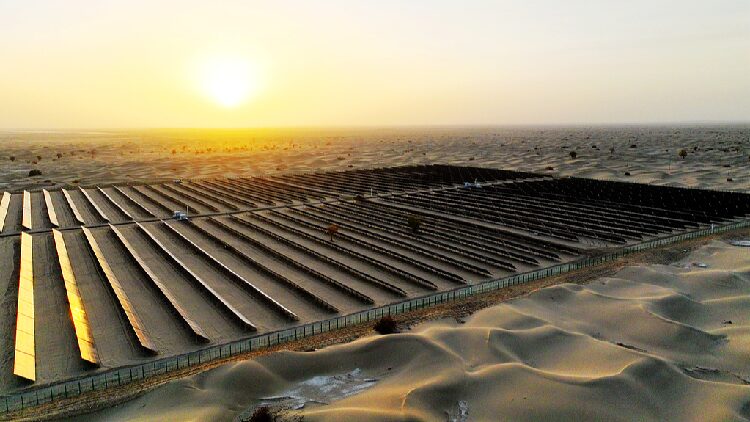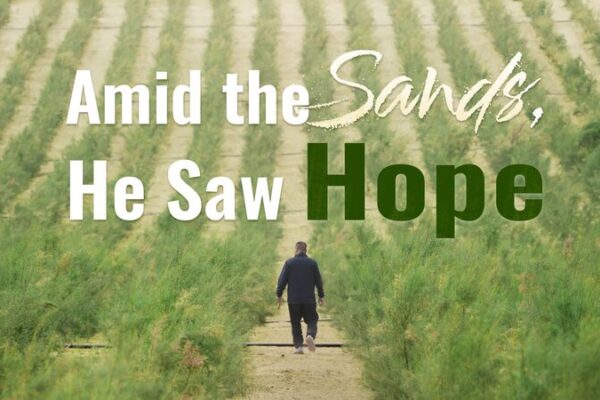A team of dedicated researchers has successfully concluded a 16-day expedition around the Taklimakan Desert, aiming to evaluate and enhance the ‘edge-locking’ project designed to combat the desert’s expansion and ecological threats.
The expedition covered the extensive 3,046-kilometer perimeter of the desert, known as China’s largest and the world’s second-largest shifting sand desert. The Taklimakan poses significant ecological challenges due to its mobility and frequent sandstorms, affecting the surrounding regions.
Scientists from the Xinjiang Academy of Forestry, the Xinjiang Institute of Ecology and Geography of the Chinese Academy of Sciences, and other institutions participated in the project. They gathered crucial data on various desert control technologies, including engineering sand control and photovoltaic sand control methods implemented at the Ruoqiang County project site.
“Our team conducted in-depth research on the techniques applied in the ‘edge-locking’ project,” said Zhang Huifang, a researcher at the Modern Forestry Research Institute under the Xinjiang Academy of Forestry. “By exploring engineering, biological, and photovoltaic sand control methods, and analyzing social and environmental factors, we have gathered valuable data to assess the project’s effectiveness and lay the foundation for the next phase.”
The researchers also inspected flood irrigation projects and emphasized the importance of optimizing the placement of grass grid sand barriers to improve their efficiency. These efforts aim to build a key technical system for creating efficient forest and grass belts to enhance desert control.
Notably, on November 28, 2024, rose seedlings were planted in the last ‘edge-locking’ gap area in Yutian County, marking the completion of the green sand-blocking protective belt around the entire edge of the Taklimakan Desert.
The successful expedition and ongoing projects represent significant steps toward mitigating the environmental impact of the desert and improving ecological conditions for local communities.
Reference(s):
16-day expedition on Taklimakan Desert 'edge-locking' project ends
cgtn.com



